내용들
People climb everything from boulders to mountains, and everything in between, including buildings and trees. Climbing and climbs can be categorized into different disciplines that theCrag calls route gear styles. While some resources tend to mix up ascent styles (완등 형태) and climbing styles, theCrag makes a clear distinction between the two.
The ascent style or tick type defines how you climbed a specific climb whereas the route gear style defines what climbing style is the most common style to ascend a specific climb. In other words, the route gear style asks the question:
Or put another way, if I only have a certain amount of gear - what routes can I climb?
Answering this question is quite obvious for many climbs but it still remains challenging in certain cases. What is the boundary between an Alpine Climb and an Ice Climb? When do we change an Aid Route to a Trad or Mixed Trad Route after it has been freed? How do we handle a Sport Route that is being green pointed? To name just a few.
Luckily, the approach taken by theCrag to distinguish between ascent style and climbing style allows to cover most cases. You may free solo a trad climb, green point a sport route or top rope a boulder.
The following table lists the color coded route gear styles used on theCrag with a short description and the typical gear required. Note that this list is just to demonstrate the core differences between the gear used in each climbing style and is by no means meant to be a complete list of gear required to climb a specific route!
Traditional climbing내용으로 돌아가기
Traditional or trad climbing involves climbing routes in which removable protection against falls is placed by the climber while ascending. Read more in our article 암벽등반 소개.
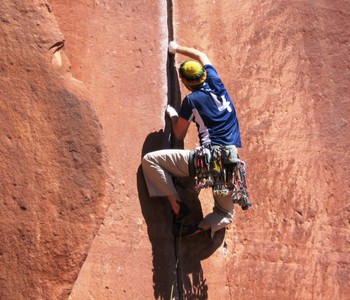
Gear characterising 전통등반 climbing style내용으로 돌아가기
Climbing shoes, harness, rope (single rope 또는 twin ropes), belay device, chalk, quickdraws 그리고 trad-rack (friends, wires, hexes 그리고 cams).Mixed traditional climbing내용으로 돌아가기
Some trad routes use bolts to protect parts of the climb. Traditional climbing gear is still required for the other parts. This is what is called mixed traditional or mixed trad climbing on theCrag.
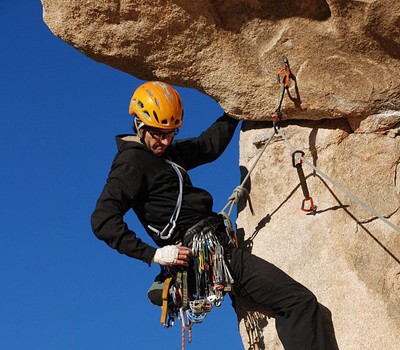
Gear characterising 혼합 고전등반 climbing style내용으로 돌아가기
Climbing shoes, harness, rope (single rope 또는 twin ropes), belay device, chalk, quickdraws 그리고 trad-rack (friends, wires, hexes 그리고 cams).Remark: set this style by choosing Trad and entering the number of bolts.
Sport climbing내용으로 돌아가기
Sport climbing involves climbing routes that are equipped with permanently fixed protection such as pre-installed bolts and anchors. Read more in our article 암벽등반 소개.
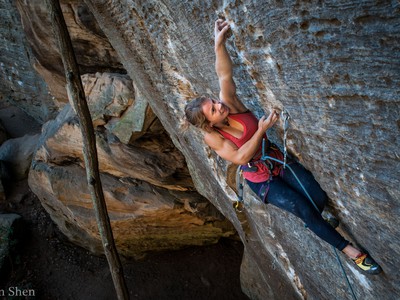
Gear characterising 스포츠 클라이밍 climbing style내용으로 돌아가기
Climbing shoes, harness, rope, belay device, chalk 그리고 quickdraws.Top rope climbing내용으로 돌아가기
Top roping means that the rope is already set up through an anchor at the top of the climb prior to the climber getting on the wall.
While you may top rope almost any route this gear style is only applied if a route can ONLY be done as a top rope. See also 설명을 쓰세요 regarding the Top Rope Access flag.
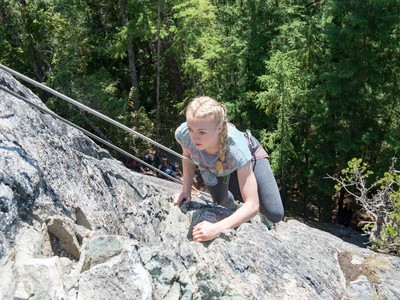
Gear characterising 톱로핑 climbing style내용으로 돌아가기
Climbing shoes, harness, rope, belay device 그리고 chalk.Bouldering내용으로 돌아가기
Bouldering is climbing without rope at heights that typically allow you to safely jump down back to the ground. Read more in our article 암벽등반 소개.
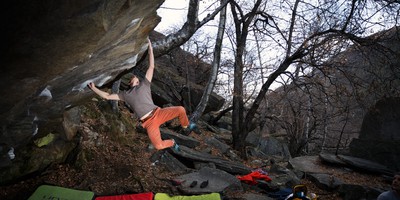
Gear characterising 볼더 climbing style내용으로 돌아가기
Climbing shoes, chalk 그리고 crash pads.Deep water soloing내용으로 돌아가기
Deep Water Soloing (DWS) or psico bloc is climbing over a deep body of water. In certain cases you may top out from a climb but typically you end up getting wet.
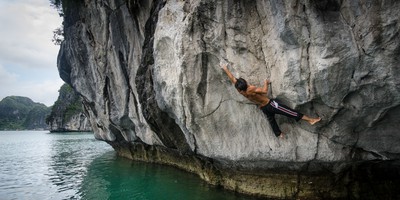
Gear characterising 딮 워터 솔로 climbing style내용으로 돌아가기
Climbing shoes 그리고 chalk.Aid climbing내용으로 돌아가기
Aid climbing is a style of climbing in which standing on or pulling oneself up via devices attached to fixed or placed protection is used to make upward progress.

Gear characterising 인공 climbing style내용으로 돌아가기
Footwear (approach shoes 또는 mountain boots), harness, rope, belay device, trad-rack (friends, wires, hexes 그리고 cams) 그리고 aid equipment (étriers, bashies, sky hooks, RURPs 그리고 rope ladders).Alpine climbing내용으로 돌아가기
Alpine climbing is a style of climbing in which the primary aim is very often to reach the summit of a mountain typically through different terrain (rock, snow, ice). On theCrag we DO NOT consider climbs that are pure , or climbs climbs just because they are in an alpine setting.
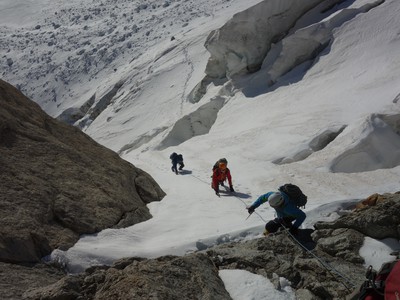
Gear characterising 알파인 climbing style내용으로 돌아가기
Mountain boots, harness, rope (single rope 또는 twin ropes) 그리고 ice equipment (snow stakes, straight shaft tools 그리고 ice-axes).Ice climbing내용으로 돌아가기
Ice climbing is a style of roped and protected climbing of features such as icefalls, frozen waterfalls, and cliffs and rock slabs covered with ice refrozen from flows of water.
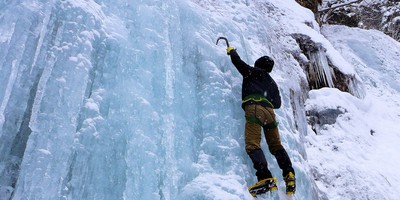
Gear characterising 빙벽 climbing style내용으로 돌아가기
Footwear (mountain boots 그리고 crampons), harness, rope (single rope 또는 twin ropes), belay device 그리고 ice equipment (ice-axes 그리고 ice-screws).Via ferrata내용으로 돌아가기
Via ferratas typically follow a steel cable that is fixed every few meters to the rock through extended rock faces. Using a via ferrata kit, climbers can secure themselves to the cable, limiting any fall. The cable as well as additionally installed climbing aids, such as iron rungs, pegs, carved steps, and even ladders and bridges can also be used as an aid for climbing.
/ea/a8/eaa8e86d91509f346c269a5c953dd3101fce9b66)
Gear characterising 비아 페라타 (철제 계단 등반) climbing style내용으로 돌아가기
Footwear (approach shoes, mountain boots 또는 sneakers) 그리고 via ferrata kit (shock absorbing slings 그리고 crab claws).Unknown내용으로 돌아가기
An unknown style - only used when you don't actually know. If a route is maybe trad or sport, and definitely not the others, then set it to trad rather than unknown and then change it to sport later if needed.
If you've invented some new style that you think should be here, please 저희들에게 연락을 주십시오.
